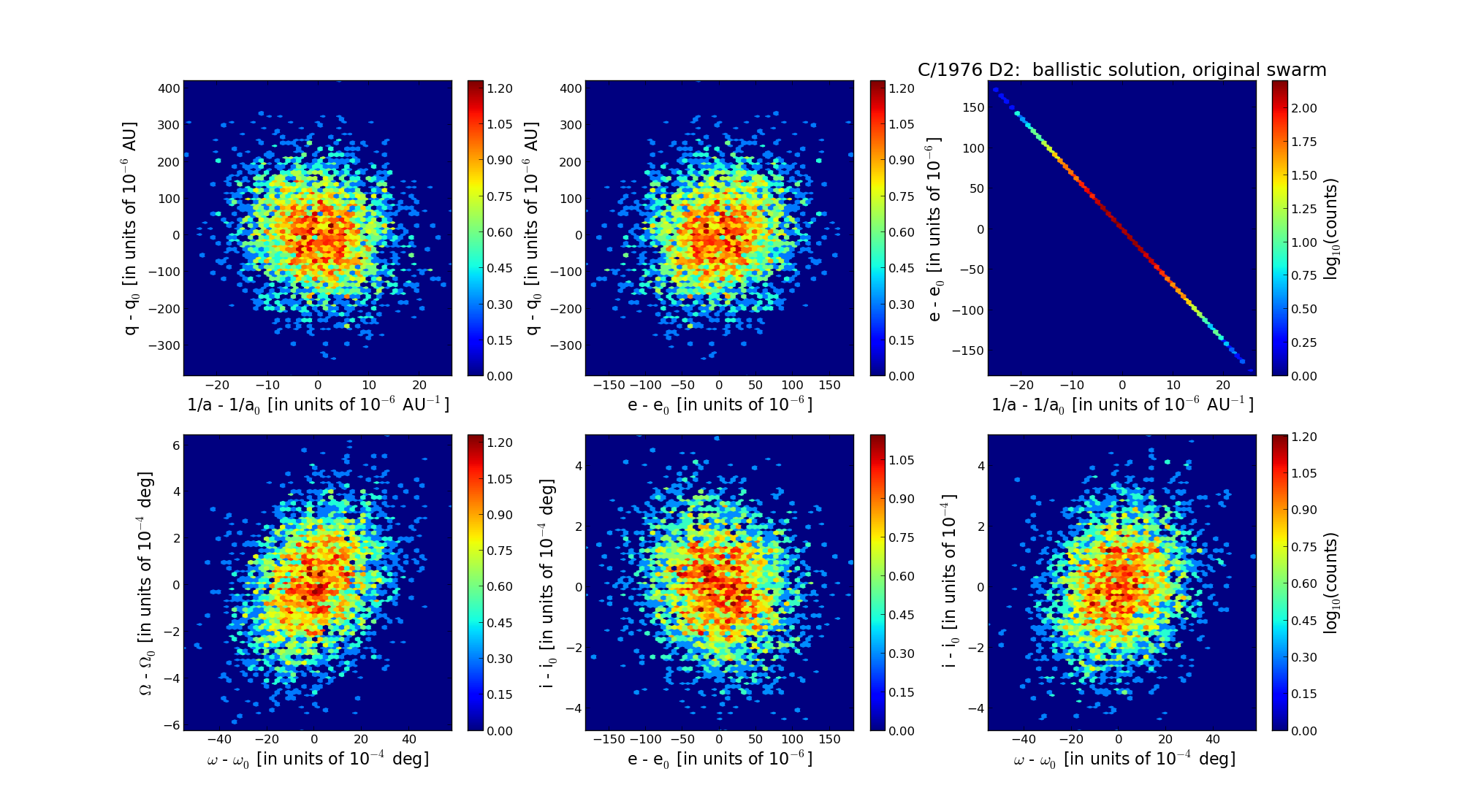C/1976 D2 Shuster
more info
Comet C/1976 D2 was discovered on 25 February 1976, 1.1 yr after perihelion passage, and was last seen on 7 April 1978 [Kronk and Meyer, Cometography: Volume 5].
The comet made its closest approach to the Earth on 3 April 1975 (5.957 au), eleven months before discovery (2.6 months after perihelion passage), and at the moment of discovery it was approaching the next opposition (minimal distance of 6.70 au to the Earth).
Solution given here is based on data spanning over 2.11 yr in a range of heliocentric distances from 7.37 au to 10.13 au.
This Oort spike comet suffers insignificant planetary perturbations during its passage through the planetary system (see original and future orbits).
See also Królikowska 2014 and Królikowska and Dybczyński 2017.
The comet made its closest approach to the Earth on 3 April 1975 (5.957 au), eleven months before discovery (2.6 months after perihelion passage), and at the moment of discovery it was approaching the next opposition (minimal distance of 6.70 au to the Earth).
Solution given here is based on data spanning over 2.11 yr in a range of heliocentric distances from 7.37 au to 10.13 au.
This Oort spike comet suffers insignificant planetary perturbations during its passage through the planetary system (see original and future orbits).
See also Królikowska 2014 and Królikowska and Dybczyński 2017.
| solution description | ||
|---|---|---|
| number of observations | 57 | |
| data interval | 1976 02 25 – 1978 04 07 | |
| data type | observed only after perihelion (POST) | |
| data arc selection | entire data set (STD) | |
| range of heliocentric distances | 7.37 au – 10.1au | |
| detectability of NG effects in the comet's motion | NG effects not determinable | |
| type of model of motion | GR - gravitational orbit | |
| data weighting | NO | |
| number of residuals | 111 | |
| RMS [arcseconds] | 1.00 | |
| orbit quality class | 1a | |
| orbital elements (barycentric ecliptic J2000) | ||
|---|---|---|
| Epoch | 1666 01 07 | |
| perihelion date | 1975 01 15.34626100 | ± 0.01321400 |
| perihelion distance [au] | 6.88171236 | ± 0.00010043 |
| eccentricity | 0.99960808 | ± 0.00005032 |
| argument of perihelion [°] | 193.436940 | ± 0.001461 |
| ascending node [°] | 22.762585 | ± 0.000180 |
| inclination [°] | 111.987797 | ± 0.000138 |
| reciprocal semi-major axis [10-6 au-1] | 56.95 | ± 7.31 |
| file containing 5001 VCs swarm |
|---|
| 1976d2a1.bmi |

